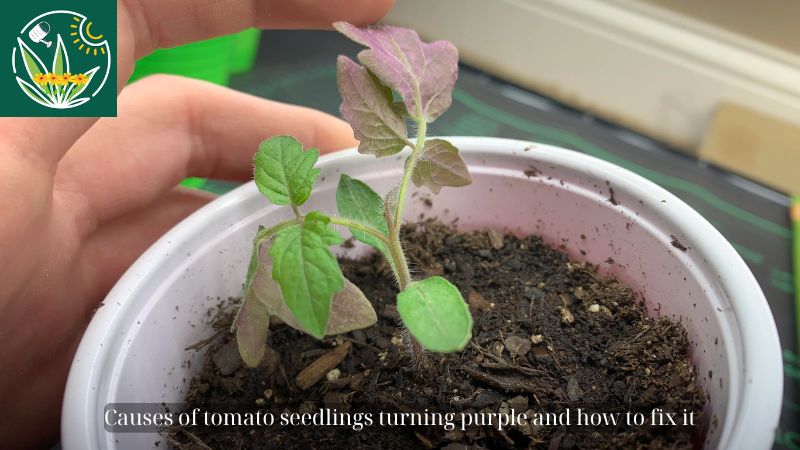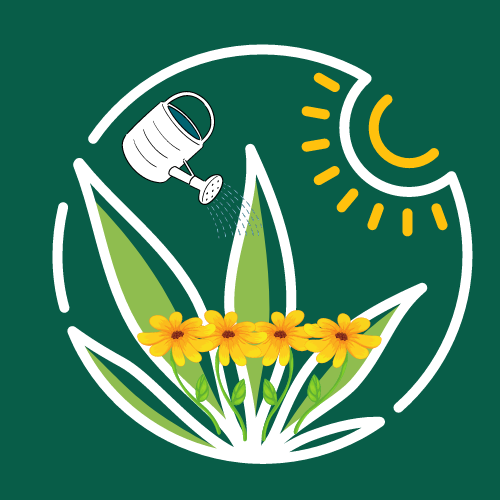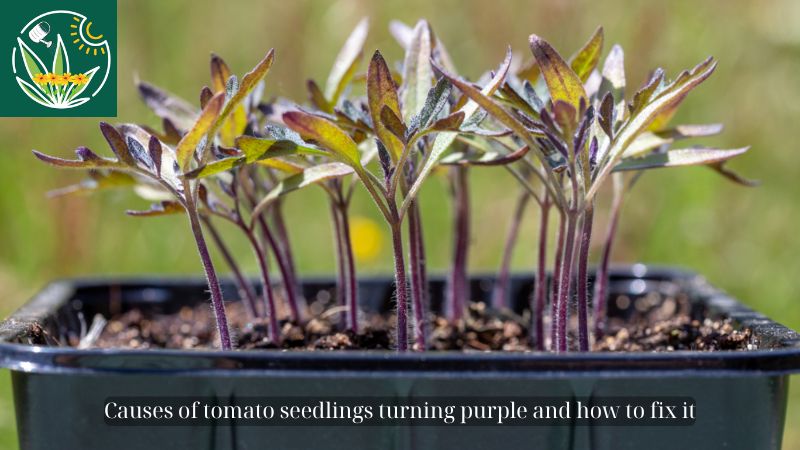Tomatoes are a common garden plant that produces delicious and nutritious berries. However, tomato seedlings turning purple – a sign that worries many gardeners. Some tomato varieties such as ‘Indigo Rose’ have naturally purple leaves and fruits, rich in antioxidants. But for common varieties, purple leaves are often a sign that the plant is having nutritional problems or is being attacked by pests.
To help your tomato plants grow healthily and overcome this situation, let’s learn more about the causes and effective treatments with Tree02.com.
Causes of tomato seedlings turning purple and how to fix it
1. Potassium deficiency
The role of potassium:
Potassium is one of the key nutrients that helps promote photosynthesis – the process by which plants harness energy from the sun to grow. Especially for young tomatoes, if grown in cold soil, the plant has difficulty absorbing potassium as easily as in warm soil. As a result, tomato leaves may turn purple or yellow for a short time. As the soil warms up, this phenomenon can correct itself and the leaves will gradually return to their natural green color.
Consequences of potassium deficiency:
If potassium deficiency persists, tomato plants will be stunted, grow slowly and will not flower or fruit as expected. This directly affects crop yield.
How to fix:
Apply a high-potassium fertilizer to tomato plants as soon as you detect signs of deficiency.
Make sure you use a fertilizer specifically designed for tomatoes to provide the necessary amount of potassium.
To prevent this from happening in the first place, avoid planting tomatoes outdoors until nighttime temperatures are consistently above 50 degrees F (about 10 degrees C).
2. Phosphorus deficiency
Phosphorus and Plant Growth:
Phosphorus is also an important nutrient for strong tomato growth. Phosphorus deficiency causes tomato leaves to turn purple or dark green, especially when the soil is too cool and wet. Symptoms of phosphorus deficiency are often most obvious in older leaves.
Consequences of phosphorus deficiency:
Tomato plants lacking phosphorus tend to be stunted, and the leaves may develop necrotic spots and curl. In addition, the plants will flower slowly and take longer to mature, reducing the yield.
How to fix:
Use a phosphorus-rich fertilizer, such as bone meal, to fertilize tomato plants.
Make sure the soil is well-drained and not too wet, which will help the plants absorb phosphorus more easily.

3. Viral Infection
Several viral diseases can also cause discoloration of tomato leaves or veins, including:
Tomato yellow leaf curl virus: Causes leaves to curl or become pale green. Leaves may have yellow edges or purple veins on the underside. This virus is commonly transmitted by whiteflies, causing significant reductions in flower and fruit production.
Tomato curly top virus: This disease is transmitted by the beet leafhopper. Infected tomato plants stop growing, leaves turn purple along the veins, and stems become stiff.
Tomato spotted wilt and Impatiens necrotic spot virus: This virus is transmitted by the western flower thrips. Symptoms include black or purple spots on leaves and stems, stiffening of leaf tissue, and yellow rings on fruit.
Remedy:
Use row covers to protect plants from disease-carrying insects.
In the event of an infection, it is best to remove and destroy affected plants to prevent the spread of the virus.
For tomato spotted wilt, western flower thrips are virtually impossible to control even with soap, oil, or sulfur dust, so early plant protection is critical.
4. Insect Invasion
In addition to nutritional and disease problems, insects can also cause tomato leaves to turn purple. One fairly small, purple insect is the springtail, which preys on young plants. It has no wings and instead uses its appendages to launch itself into the air.
How to treat:
Grow tomatoes in well-drained soil and ensure air circulation around the plant to discourage springtails from breeding.
Diatomaceous earth can be sprinkled around the plant to help kill these pests.
Frequently Asked Questions
Which Tomato Varieties Are Most Disease Resistant?
Several tomato varieties are resistant to a variety of diseases, including two standouts, ‘Top Gun’ and ‘Mountain Majesty’, which are highly resistant to spotted wilt.
What are the signs of overwatered tomatoes?
Overwatered tomato plants often droop, with stems and leaves looking limp and droopy.
When is it warm enough to move tomatoes outside?
Tomatoes should never be moved outside before the last frost. Ideally, wait until nighttime temperatures are consistently above 50 degrees F to ensure good growth.
Conclusion
Purple tomato leaves can be an important sign of plant health, indicating that the plant is experiencing certain nutritional or pest problems. From potassium and phosphorus deficiencies to viral infections and insect infestations, each cause has its own symptoms and requires specific treatments.
To help your tomato plants recover and thrive, it is essential to monitor the condition of the plants, provide them with adequate nutrients, and protect them from pests. By applying the knowledge shared, you will be able to care for your tomato plants more effectively, ensuring that they produce delicious, nutritious fruit.






